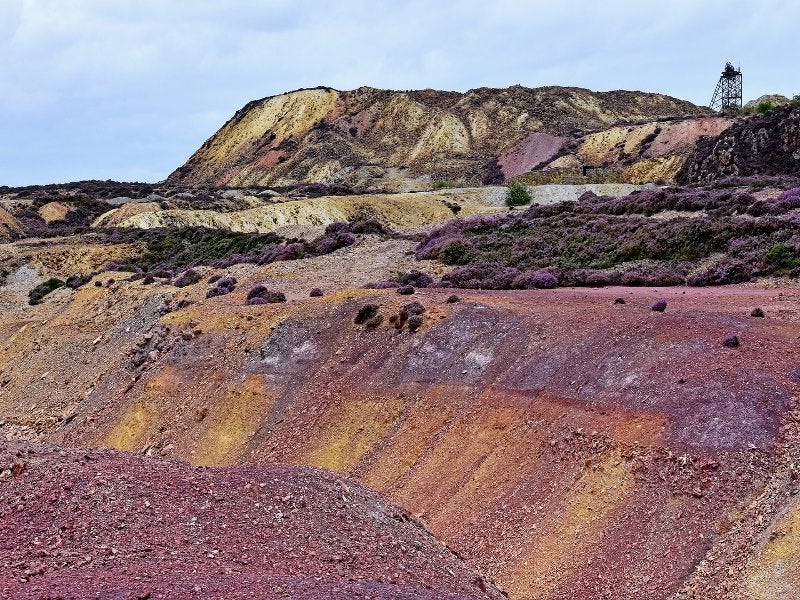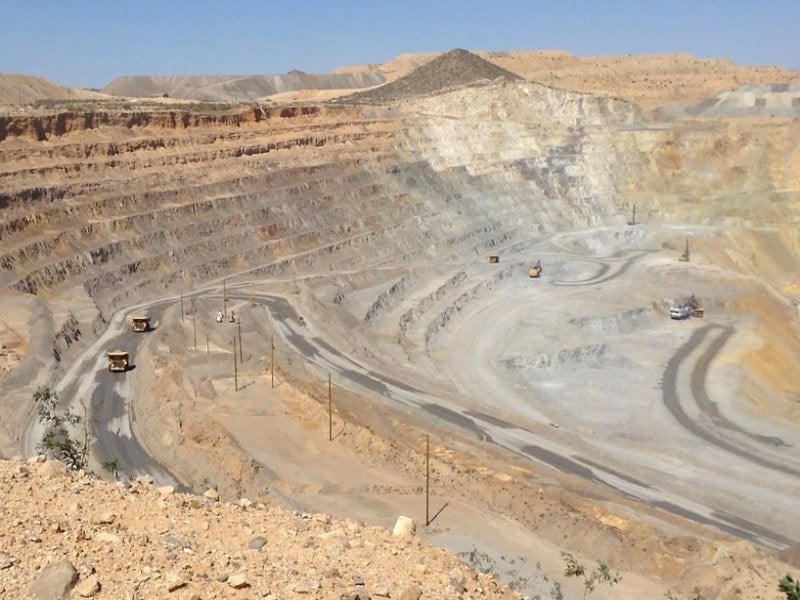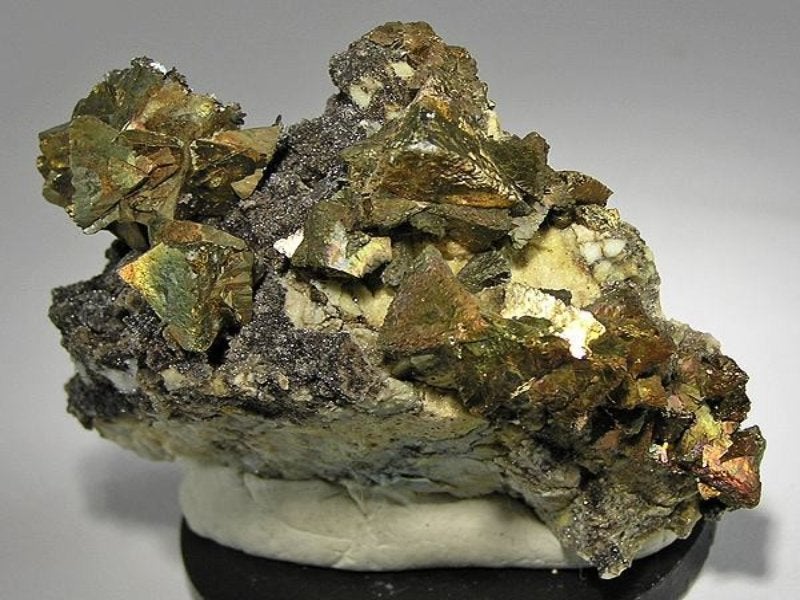The Caravel copper project is a planned open-pit mine located in Western Australia.
The project is owned by Australian Securities Exchange (ASX)-listed copper exploration and development company Caravel Minerals. It was renamed from Calingiri Project to Caravel Copper Project in 2018.
The project’s Pre-Feasibility Study (PFS), which was based only on the Bindi and Dasher deposits, was announced in July 2022. It was followed by an updated PFS in September 2022.
According to the PFS report, Caravel project is expected to produce 62,000 tonnes of copper in very clean concentrate annually. The mine will have an initial life of 28 years.
Initial capital investment that will include the construction of the process plant, site infrastructure, tailings storage and borefield is estimated to be A$1.2bn ($800m).
The project’s final investment decision is expected to be taken in 2024. Construction works are expected to commence in 2025, with first production slated in the second half of 2026.
Location details
The Caravel copper project lies in cleared agricultural freehold land between the towns of Calingiri and Wongan Hills in the Wheatbelt region of Western Australia. The site is approximately 150km north-east of Perth.
The copper deposit is located within the mining lease applications MLA70/1410 and MLA70/1411.
The site is also well connected to existing infrastructure including interconnected power, roads and highways and regional service towns.
Exploration history
Dominion Mining procured and assessed around 200,000 regional roadside soil geochemical samples throughout the Wheatbelt between 2005 and 2013 to check for gold. The activity led to the identification of anomalous copper in the region.
In 2010, RC drilling first discovered mineralisation after intersecting pervasive chalcopyrite-molybdenite mineralisation.
Dominion was acquired by Kingsgate Consolidated in 2013. In the same year, Caravel Minerals bought Quadrio Resources, which held the exploration licences.
Exploration activities undertaken between 2013 and 2015 led to the delineation of a large system of copper mineralisation. Additional infill drilling was carried out between September 2015 and March 2016. A maiden JORC Resource estimate was announced in 2017.
A scoping study of the project was published in 2016, which was updated in 2019. An additional scoping study for Caravel Copper Project was announced in 2021 based on first-phase PFS work.
In 2022, a sterilisation AC drilling campaign was conducted to test areas peripheral to the Bindi resource. This led to the discovery of the Bindi Far East prospect and other potential extensions.
Geology and Mineralisation
Caravel features a large porphyry copper mineralisation system stretching more than 30km within a highly deformed Archaean granite. The system has multiple resource hosting deposits.
The current resource in Bindi and Dasher deposits represent 6km of the 30km long system, while other deposits are yet to be fully delineated.
Copper mostly occurs as chalcopyrite sulphides associated with quartz veins. Mineralisation may also include low levels of molybdenite, pyrite and pyrrhotite.
Reserves
According to the pre-feasibility report, the Caravel Copper Project Maiden Ore Reserve (JORC 2012) contains 583.4 million tonnes (Mt) at 0.24% copper for 1.42Mt contained copper.
The figure includes proven and probable ore reserves of 105.4Mt for 0.28Mt contained copper and 478.0Mt for 1.14Mt contained copper, respectively.
Around 82% of the project’s 28-year mine life is in ore reserves.
Mining
A conventional open-pit extraction method will be used to mine at Caravel. This will involve using reverse circulation (RC) grade control drilling and autonomous platform rigs for blast hole drilling.
Manned electric shovels and backhoes loading autonomous diesel-electric trucks will be used for loading and hauling of ore and waste.
The project is also expected to see extensive use of automation and electrification of the mining fleet, enabling the adoption of an owner-operator model. It will also help in reducing environmental impact and increase operational safety.
Initially, mining will commence at Bindi with two starter pits. Bindi will be developed in five stages, while Dasher will be developed in three stages.
The deposits will deliver 715Mt of ore at an average grade of 0.24% and a strip ratio of 1.3:1.
The processing plant design will be based on conventional crushing, grinding and flotation. It will separate copper minerals, mainly chalcopyrite, which will be thickened and filtered into a marketable product for dry handling and trucking.
The facility will feature two 13.9Mtpa processing trains providing it with a total processing capacity of 27.8 Mtpa.
The concentrate will finally be trucked by public road to Bunbury Port or to Geraldton Port located 340km and 400km away, respectively.
Other key infrastructure
Power will be supplied from the existing regional electrical grid adjacent to the site within the South West Interconnected Network’s North Country subregion.
The Caravel project will require up to 125MW power for operations.
It will secure water by developing new water resources and buying existing allocations. Caravel plans to develop and licence a borefield, located 60km to the west of the project, to procure water through a pipeline.
The project’s Tailings Management Facility (TMF) will be located within a broad, low relief, valley. Initially, TMF development will include embankments to the north and south, and will stretch until shallow sloping hills in the east and existing hills and the Bindi waste dump towards the west.
As the project develops, embankments will be created on the east and west sides.
Contractors involved
Engineering services firm Ausenco carried out Caravel Copper Project PFS studies on process plant and infrastructure design, capital and operating cost estimation as well as execution planning
Caravel Minerals appointed Orelogy Mine Consulting for mine design and reserve estimates, while Dempers and Seymour conducted geotechnical analysis.
Civmec, a construction engineering company, was engaged for construction and Knight Piesold Tailings as tailings storage consultant.
Other companies that served as Caravel Minerals Pre-Feasibility Study technical advisors are Trepanier, Fortin Pipelines, Sensorem, Western Power, ECG Engineering Power, ALS Laboratories, Aurifex Metallurgy, Preston Consulting, Dortch Cuthbert, Global Groundwater, Smith Drilling, Minera Mining, Qube Bulk and FTI Consulting among others.





